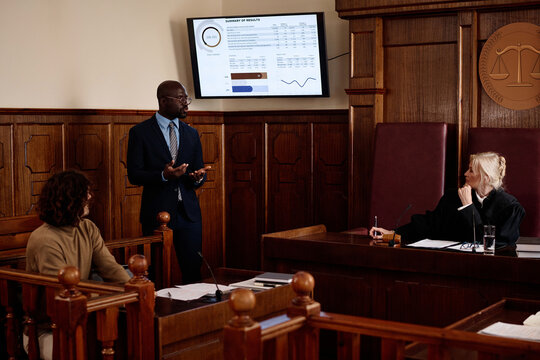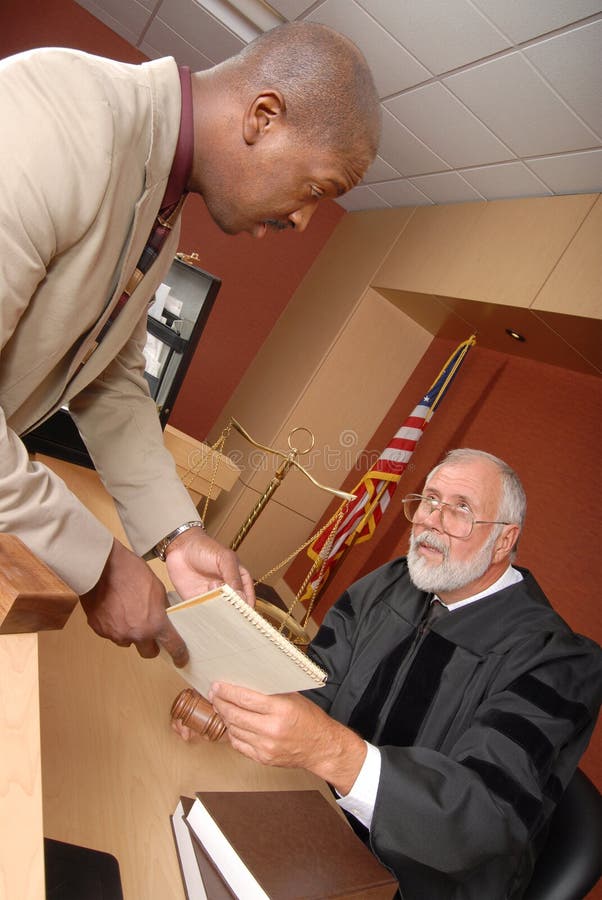Browsing the Intricacies of Trial Presentations: Tips for Seamless Shipment and Compelling Arguments
In the realm of legal procedures, the art of trial presentation stands as a crucial component of success. The complexities fundamental in test presentations call for a delicate balance of strategy, skill, and ability.

Comprehending Test Goals
To successfully navigate a test, it is important to have a clear understanding of the purposes that need to be attained. Before entering the court, legal teams should define their objectives and preferred results. These objectives work as guiding principles throughout the test, forming strategies and affecting decision-making procedures.
Recognizing test purposes entails a thorough evaluation of the case, legal precedents, and the customer's best interests. Trial Presentations. It requires a thorough exam of the facts, recognizing vital concerns, and anticipating possible obstacles. By setting specific and measurable objectives, lawyers can customize their disagreements and presentations to straighten with the desired outcomes
Moreover, a clear grasp of test purposes enables lawful groups to prioritize proof, witnesses, and legal debates effectively. It permits the development of a coherent story that resonates with the discretionary, strengthening the general case presentation.

Organizing Evidence Efficiently
Having a clear understanding of trial objectives lays the foundation for organizing proof successfully in lawful proceedings. By lining up the discussion of evidence with the preferred outcomes of the test, lawful teams can strengthen their debates and improve their persuasiveness.
One more crucial element in organizing evidence effectively is developing a rational flow. Presenting proof in a systematic and sequential manner can aid develop an engaging story that sustains the lawful disagreements being made. In addition, utilizing visual help such as timelines, graphes, or charts can better enhance the organization of proof and aid in clarifying complex relationships or series of events.
Moreover, making sure that all evidence provided is appropriate and admissible to the instance is vital. Pointless or inadmissible proof can diminish the stamina of the debate and potentially damage the reliability of the providing event. A thorough evaluation and choice process need to be taken on to consist of just the most legitimately audio and impactful evidence in the test presentation.
Crafting Influential Stories
Crafting compelling stories plays an essential role in presenting persuasive disagreements throughout lawful process. A well-crafted story has the power to captivate the target market, stimulate feelings, and inevitably sway the decision in support of the here and now event. When building a narrative for a test presentation, it is necessary to establish a clear storyline that highlights bottom lines and attaches them in a systematic manner. Begin by describing the facts of the instance in an engaging manner, making certain that the sequence of events is very easy to comply with. Introduce characters effectively, giving history information that aids the target market understand their inspirations and actions. Furthermore, integrating vibrant descriptions and appealing language can bring the story to life, making it extra unforgettable for the discretionary. By weaving together proof, testament, and legal debates into a influential and cohesive story, legal experts can effectively support for their clients original site and boost the likelihood of a positive outcome in the court.
Mastering Visual Aids
Reliable use of visual aids is crucial to boosting the impact and clarity of trial presentations. Visual aids, when used tactically, have the power to streamline intricate details, reinforce key points, and leave a long lasting perception on the discretionary. To grasp aesthetic help in test discussions, it is critical to make certain that they are clear, succinct, and pertinent to the debates being made.
When incorporating aesthetic help, such as graphes, graphs, photographs, or timelines, into a test discussion, it is important to maintain them aesthetically appealing yet expert. The visuals ought to complement the verbal arguments, giving a graph of the details being gone over without overwhelming the audience with unneeded information.
Additionally, practicing with the visual aids ahead of time is critical to guarantee a seamless distribution throughout the trial. Acquainting oneself with the material, shifts, and timings of each visual help can assist maintain the circulation of the discussion and avoid technological problems that may emerge.
Supplying Impactful Closing Disagreements
A compelling closing debate works as the culmination of a test presentation, encapsulating the core story and convincing the discretionary towards a desirable choice. To deliver an impactful closing debate, it is essential to succinctly recap bottom lines, highlight the toughness of your instance, and deal with any weaknesses in a strategic fashion. Begin by describing the major debates that sustain your client's setting, emphasizing why the evidence provided throughout the test supports your narrative. It is essential to produce a feeling of cohesion and clearness, guiding the court and jury towards the wanted final thought.
Additionally, integrating psychological charm can additionally enhance your closing disagreement. Ultimately, a well-crafted closing argument need to leave a long-term impact, compelling the court and court to rule in your customer's favor.
Final Thought
In conclusion, official source grasping test discussions entails understanding purposes, arranging evidence, crafting narratives, utilizing visual aids, and delivering impactful closing arguments. By executing these techniques efficiently, lawyers can present their instance flawlessly and make engaging disagreements in the court. It is essential to navigate the intricacies of test discussions with precision and skill to attain success in lawful procedures.
By lining up the discussion of evidence with the preferred end results of the trial, lawful groups can reinforce their disagreements and improve their persuasiveness (Trial Presentations). To grasp visual help in test presentations, it is essential to guarantee that they are clear, succinct, and pertinent to the disagreements being made
A compelling closing debate offers as the culmination of a test discussion, encapsulating the core story and convincing the judge and court towards a positive decision. Begin by laying out the primary arguments that sustain your client's position, stressing why the evidence offered throughout anonymous the test supports your story.In conclusion, understanding trial discussions includes understanding purposes, organizing evidence, crafting narratives, making use of visual help, and providing impactful closing arguments.